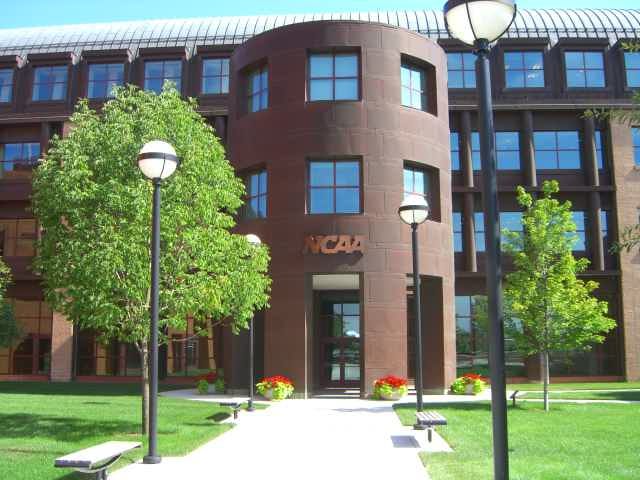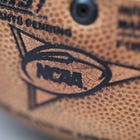
On Friday, May 24, the PAC-12 joined the NCAA Board of Governors and other autonomous-five schools in approving terms of a settlement in the landmark House v. NCAA. The settlement will also cover pending antitrust suits in Hubbard v. NCAA and Carter v. NCAA, according to Yahoo! Sports’s Ross Dellenger. The final votes came ahead of the May 23 deadline to settle the case imposed by Kessler and the plaintiffs.
All three suits were brought by lead counsel Jeffrey Kessler and two (House and Hubbard) sit on the docket of Justice Claudia Wilken, who has a track record of ruling against the NCAA and for athletes in previous transformational cases like O’Bannon v. NCAA and Alston v. NCAA.
Last time we talked about House, settlement terms were floated, but nothing concrete was stated. Now, though, we can dig deep on just how this will impact college sports going forward.
Required Reading:
Terms of the Settlement
The settlement really covers two main areas: backpay for former student-athletes who were unable to exercise their NIL rights or profit from TV and social media exposure, and future pay for incoming athletes.
The first area is much simpler, carrying a $2.78 billion price tag to backpay every college athlete who was eligible for NIL deals and appeared on television at any point in the last four years. The four-year time limit comes from federal antitrust regulations, which do not allow class-action suits to add plaintiffs who were affected over four years ago.
The $2.78 billion settlement will be paid out to the affected athletes over a 10-year period.
It’s the second point that brings the major paradigm shift that everyone was waiting for. The NCAA, and by virtue, its member schools, must start revenue sharing with athletes. According to ESPN’s Pete Thamel, the revenue sharing is expected to begin in 2025. The Athletic’s Nichole Aurebach and Justin Williams reported that the settlement includes a 22 percent revenue share at the onset - 2025 - and would increase over time.
Additionally, a release from NCAA President Charlie Baker obtained by Aurebach and Williams shows that revenue sharing is in “addition to scholarships, third-party NIL payments, health care and other benefits that college athletes already receive.”
The settlement also eliminates scholarships caps, which would allow schools to put entire rosters on scholarship. Currently, the FBS cap is 85 full-time scholarships, while FCS carries a 63-scholarship max. Both divisions have rosters capped at 115 players, all of which would theoretically receive a full ride.
Does this kill the NCAA?
While I may have floated that idea in my earlier piece, the House settlement actually may save the NCAA.
Allow me to elaborate.
The settlement binds the autonomous five conferences - also known as the Power Five, and including the PAC-12 at the time of the lawsuit before any realignment - to the NCAA for at least 10 years.
With all this talk about superleagues and other seismic shifts, there’s a clear push to a post-NCAA world. That world may be coming, but it won’t arrive until 2034 at the earliest.
In a sea of losses, the NCAA cheered on a quiet, albeit massive, win. As long as the House settlement is still in effect, the autonomous five are bound to the governing organization. The courts dictate that the NCAA and the Power Five schools pay back the affected athletes. Key word: and.
With the settlement also sending shockwaves across the other 27 Division I conferences, including both Group of Five FBS schools and FCS schools, the autonomous five also cannot break off and form their own league. For many of those other 27 conference’s schools, their budgets rely on the ability to compete with autonomous five teams. If the autonomous five wanted to break off, they run the risk of crippling the remaining 27 conferences and running up their own bill.
A little mutually-assured destruction never hurt anyone, right?
How does this alter the college football landscape?
First and foremost, it rights one of the most egregious wrongs in athletics and allows athletes to earn the money they deserve.
“[House v. NCAA] means that we can finally get paid for our hard work and dedication and that we can have more freedom and autonomy over our own lives. It means that we can pursue our passions and interests beyond sports and that we can use our platforms to make a positive impact on the world,” lead plaintiff Grant House said in an interview with
.I’ve said it before and I’ll say it again: SID Sports is firmly in the camp of student-athletes’ rights. We celebrate the big win that
and other Division I college athletes scored with this settlement. Players create the entertainment. Without players, there are no college sports. They deserve fair compensation for that.Now, moving towards the institutional side, we find a more bleak outlook.
Yahoo! Sports’s Ross Dellenger reported that institutions will be sharing up to $22 million in revenue sharing with their athletes if the terms of the settlement hold up. Dellenger also reported that the $22 million cap does include exceptions, including for Alston payments and additional scholarships that can count towards the $22 million total.
From what I’ve seen, the revenue sharing payments will be reported as NIL deals between the athletes and the college. This makes the most sense, considering the school’s athletic department is using the players’ name, image and likeness for profit. However, the settlement does leave open the option of other payment methods and arrangements.
While revenue sharing will garner a lot of headlines, I think the backpay might be more problematic for schools. Aurebach and Williams reported that the NCAA, as the main defendant in the case, is footing the bill and withholding the amount from conference’s future revenues.
41 percent of the $2.78 billion settlement, or $1.2 billion, will come directly from the NCAA’s reserves. The remaining 59 percent will be withheld future revenues from every Division I conference: 24 percent from Power Five, 10 percent from the Group of Five, 13 percent from FCS conferences, and the remaining 12 percent from non-football Division I schools.
These withheld revenues are where a lot of issues will come. For most athletic departments, the wealth of their revenue comes from two sources: conference media deals and from NCAA payouts, such as from March Madness. With a massive revenue stream in NCAA payouts drying up for all these schools, it could open a ripple effect up to schools. Could this lead to schools cutting sports or shaving off some excess staffing for their athletic departments? It’s possible for some smaller schools, or ones that are already in financial trouble like Oregon State and Washington State.
Required Reading:
The big hurdle
There are still a lot of questions that need to be resolved before anything with this settlement goes into effect, though. The biggest is the role Title IX plays into revenue sharing.
For those that aren’t familiar with what Title IX actually does, it lays out the rules that:
No person in the United States shall, on the basis of sex, be excluded from participation in, be denied the benefits of, or be subjected to discrimination under any education program or activity receiving Federal financial assistance.
In terms of compliance for college athletics, Title IX boils down to three prongs that schools have to meet in order to stay compliant. According to the NCAA, those three parts are:
Participation: Men and women have to be offered equitable opportunities to participate in sports. The opportunities should be equitable based on the school’s enrollment. For example, a school that is 65% women and 35% men should have a breakdown of athletes similar to that ratio.
Scholarships: Men and women atheltes receive scholarship dollars proportional to the participation ratio. If we follow the same example, 65% of scholarship money should go towards the women, while 35% should go towards men.
Other benefits: Schools have to provide equal treatment for men and women athletes in the cases of “(a) equipment and supplies; (b) scheduling of games and practice times; (c) travel and daily allowance/per diem; (d) access to tutoring; (e) coaching, (f) locker rooms, practice and competitive facilities; (g) medical and training facilities and services; (h) housing and dining facilities and services; (i) publicity and promotions; (j) support services and (k) recruitment of student-athletes.”
In the case of the House settlement and potential revenue sharing, we can see that it might fall under two points: Scholarships and Other Benefits. There is one main difference between those points of compliance, however. Scholarship money has to be equitable, while other benefits have to be equal.
This difference is where a lot of the Title IX questions around House are raised. We don’t yet know if revenue sharing will have to be equitable - based on enrollment and proportional between sexes based on student population - or equal - the same amount to each sex. Title IX will certainly have a role to play in how the settlement goes forward, but it’s a looming question that judge Claudia Wilken will have to determine before it can go into effect.
So, what’s next?
What’s immediately next is that only one side has approved the settlement. While Kessler and his team, lead counsel for House, Hubbard, and Carter, seem happy to accept the terms, they still have to actually accept it. From there, judge Claudia Wilken, who is presiding over the case, has to approve the settlement terms.
It’ll likely take months for everything to be finalized and for Wilken to sign off, so nothing is going to change immediately. I think the Fall 2025 window to start this aligns well, especially considering Fall is the start of a new academic year and most college’s fiscal years roll over in July. It gives a clean break from the pre-revenue sharing era of college athletics and allows schools to start fresh in a new academic and fiscal year.
There’s also the pending Fontenot v. NCAA antitrust case, which is also seeking class-action status similar to House. The NCAA was trying to add Fontenot into the global settlement with House, but a judge ruling ahead of the settlement deadline that kept Fontenot in Colorado instead of California eliminated that possibility.
Because of that ruling, Fontenot will continue on. This case, like House, focuses on NCAA revenue sharing, alleging that the NCAA is restraining the market illegally for athlete’s services.
While similar on the surface, the proceedings in Fontenot have a direct impact on the House settlement. While there’s a lot to be happy about for athletes in the current settlement, it’s possible they could get more out of Fontenot. This is, after all, a broader case that can bring larger damages against the NCAA.
What you should be watching in Fontenot is if it gains class-action status, which it should, and if any athletes decide to opt out of House to seek larger damages in Fontenot.
In an interview with Sportico, lead counsel of House, Kessler, was firm in believing he set his plaintiffs and college athletes up for success in the settlement of House. He doesn’t seem worried by Fontenot’s impact on his case, and believes that the settlement will stand and go into effect.
Have any questions, ideas, article pitches, or information? With the new Substack features, you can directly message me! Hit the button below to send me a message, or reach out via email to sidsports23@gmail.com, or find us on your favorite social media platform like Facebook, Instagram, Twitter, Substack Notes and Bluesky.







